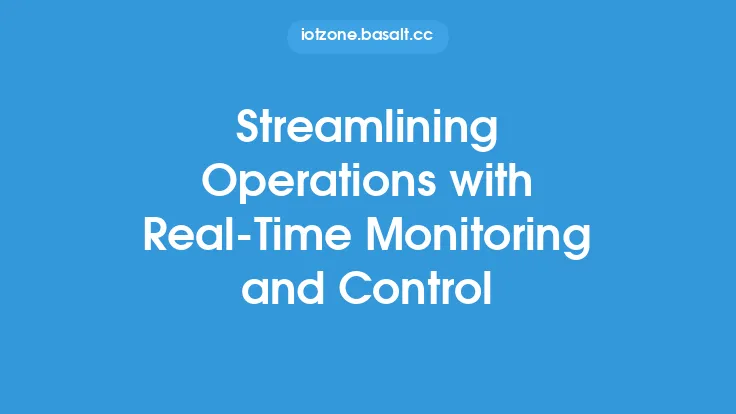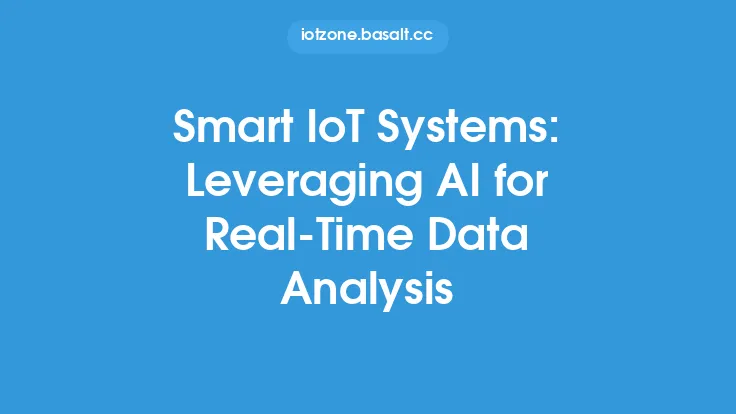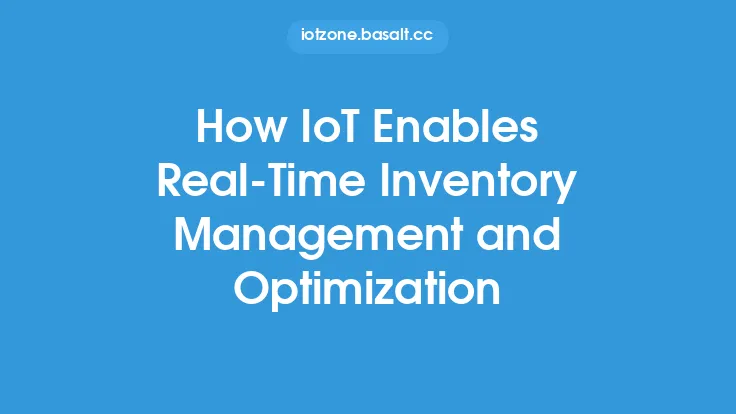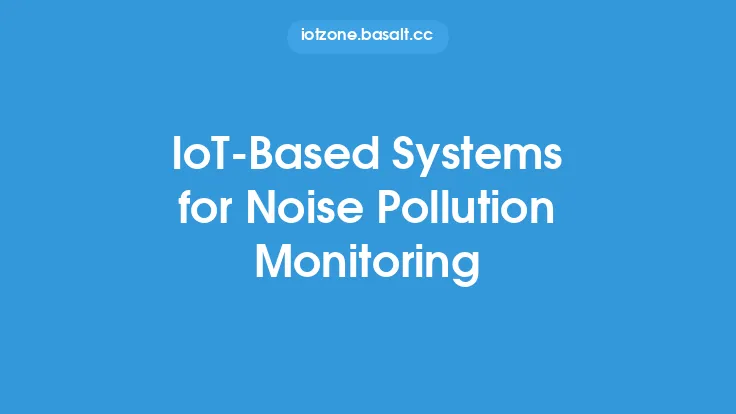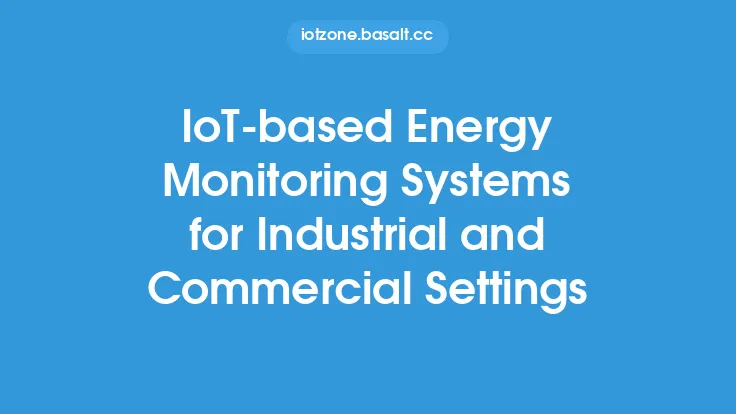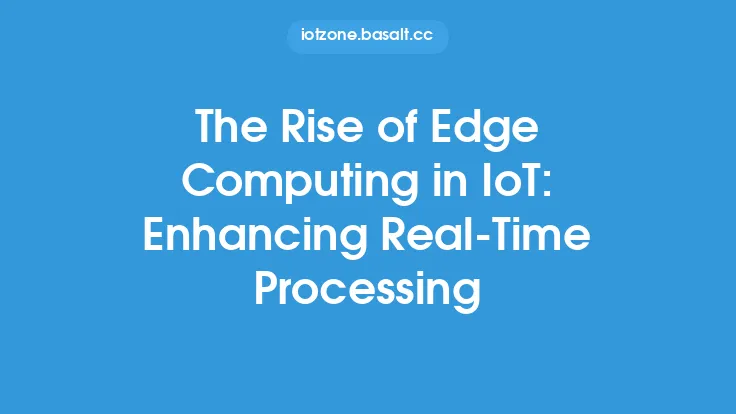The retail industry has undergone significant transformations in recent years, driven by advances in technology and changing consumer behaviors. One key area of focus has been the optimization of inventory management, where retailers aim to ensure that products are always available on shelves when customers need them. To achieve this, many retailers are turning to Internet of Things (IoT) sensors for real-time shelf monitoring. This technology enables retailers to track inventory levels, monitor product expiration dates, and receive alerts when items need to be restocked, all in real-time.
Introduction to IoT Sensors for Shelf Monitoring
IoT sensors for shelf monitoring are small devices that can be attached to shelves or products, and are equipped with a range of technologies such as RFID, Bluetooth Low Energy (BLE), and computer vision. These sensors can detect changes in inventory levels, track product movements, and monitor environmental conditions such as temperature and humidity. The data collected by these sensors is then transmitted to a central platform, where it can be analyzed and used to inform inventory management decisions. By leveraging IoT sensors, retailers can gain real-time visibility into their inventory levels, reduce stockouts and overstocking, and improve overall supply chain efficiency.
How IoT Sensors Work for Shelf Monitoring
IoT sensors for shelf monitoring typically operate using a combination of hardware and software components. The hardware component consists of the sensor device itself, which is usually a small, low-power device that can be attached to a shelf or product. The sensor device is equipped with a range of technologies, such as RFID or BLE, which enable it to detect changes in inventory levels and track product movements. The software component consists of a central platform that receives data from the sensor devices, analyzes it, and provides insights and alerts to retailers. This platform can be cloud-based or on-premise, and can be integrated with existing inventory management systems.
Types of IoT Sensors for Shelf Monitoring
There are several types of IoT sensors that can be used for shelf monitoring, each with its own strengths and weaknesses. RFID sensors, for example, use radio frequency identification technology to detect the presence or absence of products on a shelf. These sensors are often used in retail environments where products have RFID tags attached to them. BLE sensors, on the other hand, use Bluetooth Low Energy technology to detect changes in inventory levels and track product movements. These sensors are often used in retail environments where products do not have RFID tags attached to them. Computer vision sensors, which use cameras and machine learning algorithms to detect changes in inventory levels, are also becoming increasingly popular.
Benefits of Using IoT Sensors for Shelf Monitoring
The use of IoT sensors for shelf monitoring offers a range of benefits to retailers, including improved inventory accuracy, reduced stockouts and overstocking, and increased supply chain efficiency. By providing real-time visibility into inventory levels, IoT sensors enable retailers to respond quickly to changes in demand, reducing the risk of stockouts and overstocking. IoT sensors can also help retailers to improve their inventory turnover, reducing the amount of time that products spend on shelves and improving overall supply chain efficiency. Additionally, IoT sensors can help retailers to reduce waste and improve product freshness, by monitoring product expiration dates and alerting staff when items need to be removed from shelves.
Implementation and Integration of IoT Sensors
Implementing and integrating IoT sensors for shelf monitoring can be a complex process, requiring significant investment in hardware, software, and infrastructure. Retailers must first determine which type of IoT sensor is best suited to their needs, and then develop a plan for deploying and integrating the sensors with existing inventory management systems. This may involve working with IT staff, inventory managers, and other stakeholders to ensure that the sensors are properly configured and calibrated, and that the data they collect is accurate and reliable. Retailers must also consider issues such as data security and privacy, ensuring that the data collected by the sensors is protected from unauthorized access and use.
Challenges and Limitations of IoT Sensors for Shelf Monitoring
While IoT sensors for shelf monitoring offer a range of benefits to retailers, there are also several challenges and limitations to consider. One of the main challenges is ensuring that the sensors are properly configured and calibrated, and that the data they collect is accurate and reliable. Retailers must also consider issues such as data security and privacy, ensuring that the data collected by the sensors is protected from unauthorized access and use. Additionally, IoT sensors can be expensive to purchase and maintain, particularly for small and medium-sized retailers. There may also be technical challenges to overcome, such as ensuring that the sensors are compatible with existing inventory management systems, and that they can operate effectively in a range of different environments.
Future Developments and Trends
The use of IoT sensors for shelf monitoring is a rapidly evolving field, with new technologies and innovations emerging all the time. One of the key trends in this area is the increasing use of artificial intelligence and machine learning algorithms to analyze data from IoT sensors, and to provide insights and recommendations to retailers. Another trend is the growing use of computer vision sensors, which can detect changes in inventory levels and track product movements using cameras and machine learning algorithms. There is also a growing focus on the use of IoT sensors to improve supply chain efficiency, by providing real-time visibility into inventory levels and enabling retailers to respond quickly to changes in demand.
Best Practices for Implementing IoT Sensors for Shelf Monitoring
To get the most out of IoT sensors for shelf monitoring, retailers should follow several best practices. First, they should carefully evaluate their inventory management needs, and determine which type of IoT sensor is best suited to their requirements. They should also develop a clear plan for deploying and integrating the sensors, and ensure that they have the necessary infrastructure and support in place. Retailers should also consider issues such as data security and privacy, and ensure that the data collected by the sensors is protected from unauthorized access and use. Finally, they should regularly review and update their IoT sensor systems, to ensure that they remain effective and efficient over time.
Conclusion
The use of IoT sensors for shelf monitoring is a powerful tool for retailers, enabling them to improve inventory accuracy, reduce stockouts and overstocking, and increase supply chain efficiency. By providing real-time visibility into inventory levels, IoT sensors enable retailers to respond quickly to changes in demand, and to make informed decisions about inventory management. While there are several challenges and limitations to consider, the benefits of using IoT sensors for shelf monitoring make them an essential technology for retailers looking to stay competitive in today's fast-paced retail environment. As the technology continues to evolve, we can expect to see even more innovative applications of IoT sensors in retail, and a growing range of benefits for retailers and consumers alike.
